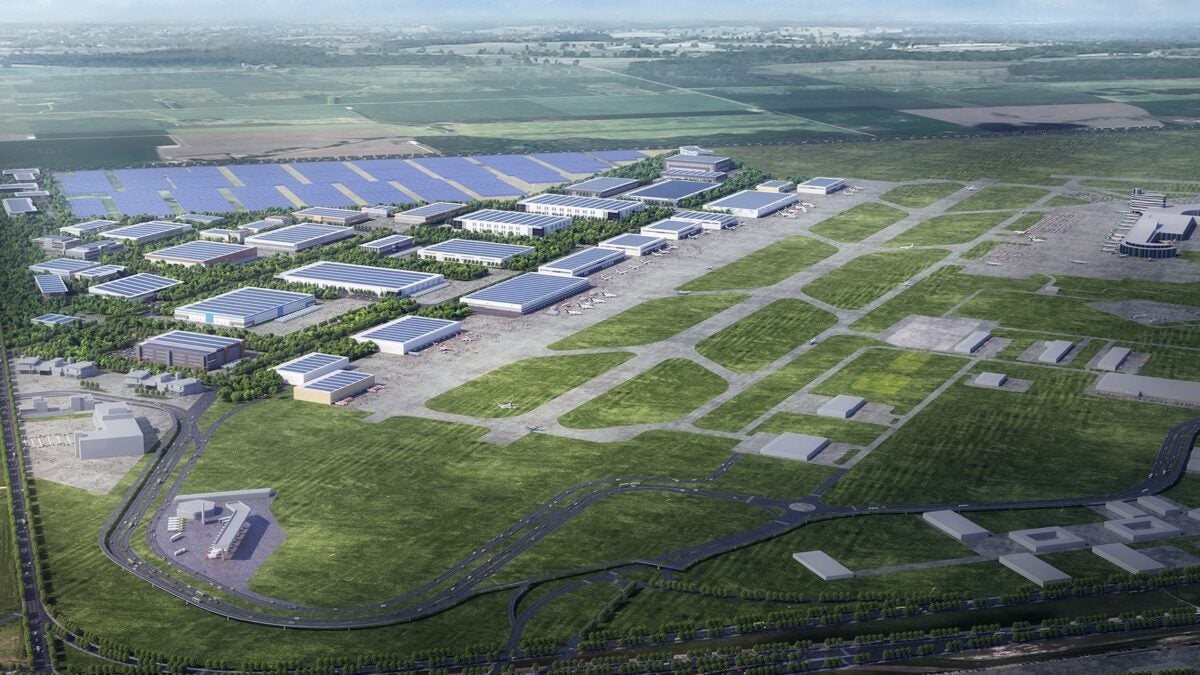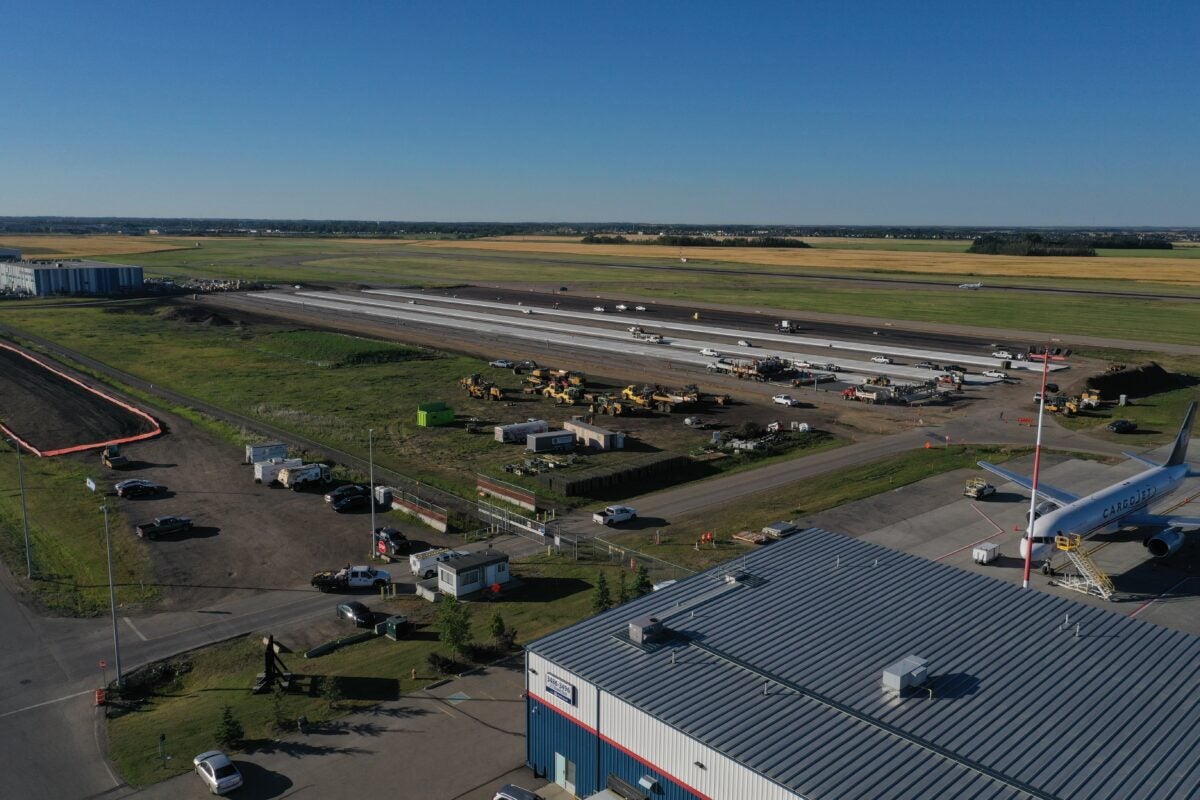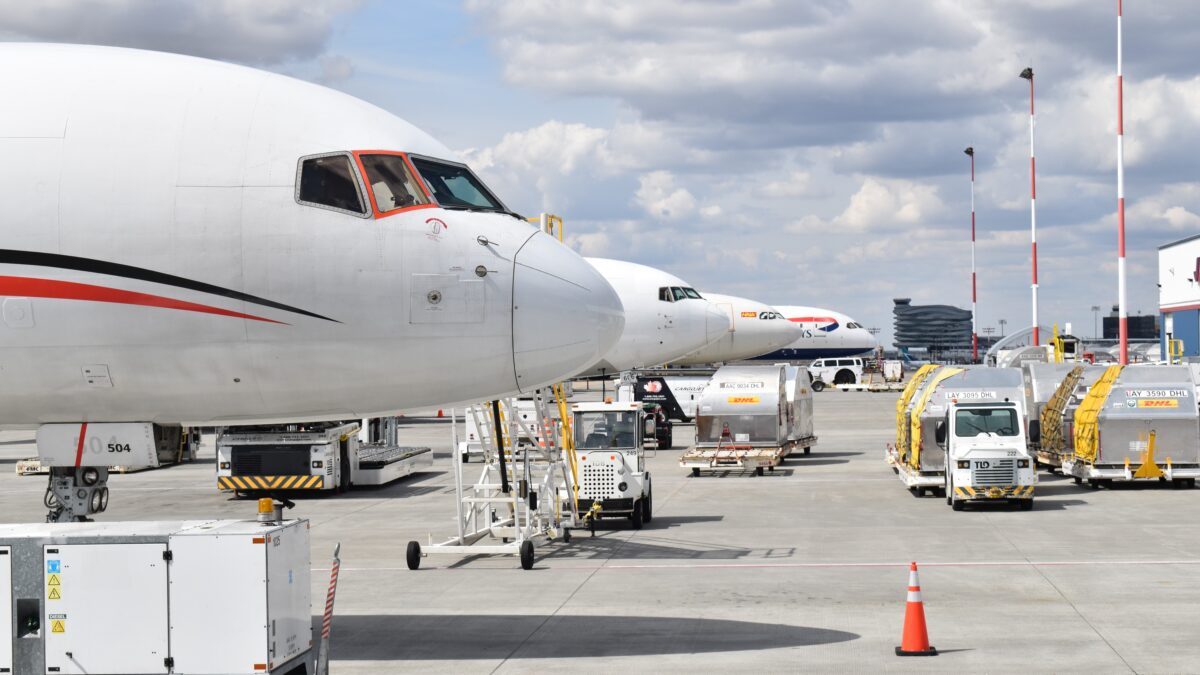At first blush Edmonton, Canada, seems an unlikely destination for international air shipments bound for online shoppers in the United States.
Following some promising trial runs with e-commerce providers, Edmonton International Airport is banking on its geographic location along circumpolar routes, congestion-free facilities and Canada’s trade-friendly customs rules to advance a multibillion dollar air logistics village and become a major cargo hub.
“Planes that typically would have stopped at another point [are using] Edmonton not just as a place to stop and get gas, but actually the ending point. And then we’re transporting the goods, by air, by road or by rail into parts of the U.S.,” said Myron Keehn, the airport’s vice president of air service and business development, in an interview. “We’re seeing dramatic cargo growth because companies are realizing the efficiencies of actually using Edmonton as their jumping off point into the U.S. and then conversely, back into Asia or the Middle East.”
In late July, Transport Canada announced a grant of up to CA$100 million ($77.3 million) to enhance cargo and logistics operations at Edmonton International Airport. The money comes from a national infrastructure program aimed at enhancing cross-border trade and making Canada more competitive.
The entire development, covering 2,000 acres with 60 million square feet of e-commerce logistics and fulfillment centers at full build-out, has a price tag of $2.7 billion to $3.9 billion, Keehn said. Preliminary consultations and surveying are underway and the airport authority plans to start exploring design concepts and timelines in the coming months. Once roadway access is in place, site development can begin, with a goal of leasing lots to developers in two years. When an initial section will open for occupancy is yet to be determined, as is a date for final build-out.
Construction began in recent weeks on a new highway interchange, a piece of supporting infrastructure funded by the government of Alberta, to improve access to the airport.
EIA is enhancing the existing cargo zone even before the new development plan gets underway. Construction crews this month began pouring concrete for six additional widebody freighter positions, which will allow the facility to accommodate 11 widebody cargo jets at one time.
In addition to the expanded cargo apron, the CA$36 million project ($28 million), half funded by the federal government, includes a new connection to the runway, installation of a new hydrant fueling system dedicated for cargo aircraft and tripling of cold-storage space.
The completed hydrant system ties into two large Shell Aviation Fuel tanks, eliminating the constant procession of trucks from the fuel farm and making refueling faster, more efficient, cleaner and safer.
Build it and they will come
Edmonton’s cargo volumes are still small by major airport standards but have steadily grown the past six years. Last year, EIA’s cargo tonnage increased 12.8% versus 2019, to 53,000 tons, and 5% above the 2020 level. Traffic in June is up 20% year over year despite a global decline in air cargo. Charter cargo traffic at EIA increased 165% from the start of 2020 to the end of 2021.
Officials say more capabilities are needed to position the metropolitan region as a major logistics hub.
The new cargo facility is a speculative venture because using Edmonton as an e-commerce air transshipment point has been limited so far. But the airport authority is confident it can attract a large amount of U.S.-bound freight and tenants.
“There’s been a little bit of ‘build it and they will come.’ But it’s also been very strategic in making sure we had the assets people needed,” said Keehn.

A handful of entities have tested Edmonton airport as a beachhead for serving U.S. markets, but Keehn wouldn’t disclose any specific retailers or distributors because they don’t want to tip their hand to competitors.
One company known to have used Edmonton airport as a consolidation center for Chinese exports to North America is EHL International Logistics Co. because EIA announced an agreement in late 2018.
EHL, a subsidiary of the Henan provincial government, temporarily operated a series of dedicated Boeing 747-400 charter flights from Zhengzhou airport to Edmonton, with onward movement to the U.S.
Several international companies are now leasing space at EIA to import and export goods, including e-commerce merchandise, on dedicated and scheduled flights, spokeswoman Elizabeth Dwernychuk said. Transfer freight moves by air and ground, depending on service levels, utilizing the extensive express delivery networks of integrated logistics companies and trucking lanes.
Edmonton is selling speed and lower cost.
Since the pandemic, third-party logistics providers and shippers have increasingly turned to less crowded, secondary airports in the U.S. that offer fast turnaround times compared to congested international gateways such as Chicago O’Hare airport, Los Angeles, New York and Atlanta.
It can take freight agents several days — and up to two weeks during busier periods — to retrieve inbound shipments from cargo terminals at these locations, where resources are more focused on passenger business. Large airports are receiving a higher ratio of all-cargo aircraft that is straining the ability of cargo terminals to deconsolidate and sort the cargo because of limited space and labor shortages. U.S. Customs personnel are also stretched thin at passenger hubs. And it is common for delivery trucks to wait in queues several hours for a load because of poor information sharing, outdated access roads and small docking areas.
The capital of Alberta is essentially in the middle of an hourglass where large cargo jets from Europe and Asia crisscross on their way to the U.S. West Coast and East Coast, respectively.
Keehn says air shippers can offload and move goods faster through Edmonton than directly to the U.S. And the system allows big aircraft to return to the air and embark on their next revenue missions without delay.
“I like what they are doing. It makes sense. It’s definitely something we’re looking at,” said Brian Bourke, chief growth officer at Seko Logistics.
Chicago-based Seko has made cross-border e-commerce a core service offering in recent years. Bourke said Edmonton International Airport has a “very creative” strategy and leadership that makes cargo a priority.
“When you have an airport dedicating their resources, focus and intensity around cargo you often see success. It’s on a par with Rickenbacker” in Columbus, Ohio, in terms of cargo-centric airports Seko considers to support its fast-growing e-commerce business, he said.
Multimodal cluster
Edmonton also has other local advantages, such as a young labor force and lower cost of living that makes hiring easier than in many crowded metropolises and lower real estate prices. The cost of land for industrial development is cheaper than on the U.S. Eastern Seaboard. U.S. developers can also save money because of the strength of the U.S. dollar against the Canadian currency, Keehn explained.
But industrial lease rates in Edmonton, on a square footage basis, are no bargain compared to many U.S. cities, according to data shared by real estate services and investment firm CBRE. Leases are significantly less than in other Canadian cities, New Jersey and Southern California, but on par with, or more than, other metro areas in the U.S.

The airport is one piece of a multimodal logistics cluster that is already a major entry point to North America for many kinds of sea freight, not just e-commerce goods.
There are extensive rail and highway connections, as well as a large industrial park, close to the airport.
A key component is the rail connection to the Port of Prince Rupert, which is poised to become the second-largest container port in Canada this year, as well as the Port of Vancouver. As an inland port, containers from Asia are deconsolidated and remixed in Edmonton before being shipped by ground transport to eastern Canada and the U.S.
Goods are able to reach Edmonton in 14 to 18 days because it is the closest North American port to Asian manufacturing centers and experiences much less congestion than North American counterparts. Intermodal moves are also faster and a third the rate out of Vancouver because Prince Rupert is already at high elevation, which means trains don’t have an arduous climb up the Rocky Mountains.
The Edmonton logistics community leverages customs programs and the region’s status as a foreign trade zone to facilitate transfers to U.S. warehouses. Rather than clearing a shipment through customs at western seaports, containers move by rail and then truck to bonded facilities where they can remain duty free as long as they aren’t released into the Canadian market. Shipments, including air cargo, immediately routed to the U.S. or Mexico move on an in-transit bond that also defers clearance and duty payments.
Edmonton was the first airport in Canada to conduct trials of commercial delivery by cargo drones.
“Edmonton is a prime example of how an airport should be managed, run and work,” Stan Wraight, an influential air cargo expert who lives in Montreal, told FreightWaves. “It will claim its fair share of trans-Pacific operations because on top of being an efficient hub, it offers import and export cargo possibilities as well.”
Business development officials say all those elements make the city of Edmonton an ideal base for freight distribution and manufacturing for foreign markets.
The airport’s role supporting Edmonton’s inland port model is highlighted by a company, which Keehn declined to name, that ships goods from Asia to Prince Rupert and then by rail to Edmonton. The merchandise is trucked to a warehouse at the airport, deconsolidated and shipped out by road and air transport to the U.S.
With increased air cargo service, more Canadian companies are turning to Edmonton for exports. Edmonton-based fashion brand EmmyDeveaux, for example, opened an e-commerce export facility at EIA in 2021. The company sells directly to consumers and is focused on expanding to U.S. and overseas markets.
“We are connecting outbound cargo as well,” said Keehn. “And that’s been beneficial from a perspective of Asia. Everything from agri-food products to pharmaceuticals, manufactured goods, medical devices are being brought into Edmonton and shipped back to Asia.”
Click here for more FreightWaves/American Shipper stories by Eric Kulisch.
CONTACT: [email protected]
RECOMMENDED READING:
Zhengzhou airport doubles cargo capacity with new, high-tech terminal










